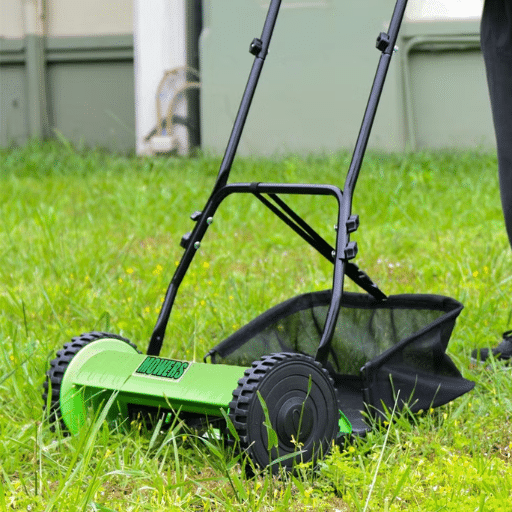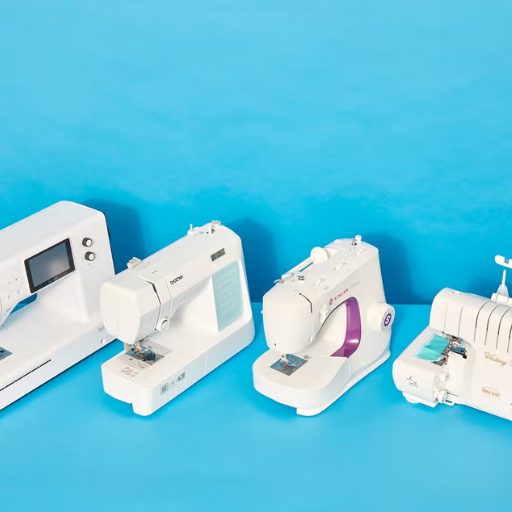
The beginning of making your own embroidery and sewing may be adventurous, however, it can also be very daunting because of so many machines that are available in the market today. Whether you wish to develop your clothesline, make gifts, or just indulge yourself in a creative activity, machine selection is vital. This guide is for beginners planning to buy sewing and embroidery machines and have no idea what machine and system features they need to consider, so their purchase is a good investment. We will focus on the most important machine features for inexperienced users, look at the most popular models, and provide tips to make the process more convenient. By the end of this article, you will be in a good position to select the right machine as all the essential information will be provided about the machine. You will feel more comfortable and active in creating new sewing projects.
What is the Best Embroidery Machine for Beginners?
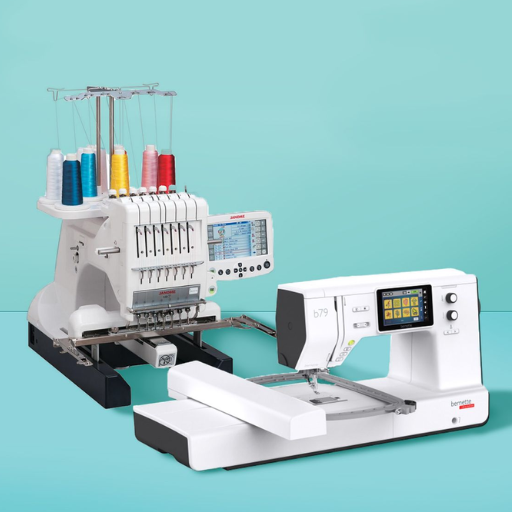
The most important features when selecting the best embroidery machines for beginners to consider are effectiveness and usability. The Brother PE800 is well known for its variety of features and its ease of use for beginners and advanced users alike. Featuring a wide embroidery area of 5 inches by 7 inches this machine offers a lot in terms of creativity and creativity potential. The said machine has as well 138 built in designs which includes 11 font styles which is a great help for monogramming and customizing work. There is a simplified process of design selection and editing through a user friendly touch screen. Choosing and editing designs is easy with a touch screen, and both an auto cut and a thread cutter are useful in alleviating troubles. Moreover, the machine is tough and dependable, making the Brother PE800 an excellent choice for novices who want to experience the world of embroidery without being terrified.
Understanding the Features of an Embroidery Machine
When considering embroidery machine features, a few fundamental issues must be taken into account to make the right choice.
- Embroidery Area Size: A bigger embroidery field, like the 5” x 7” provided by Brother PE800, has allowed for much greater flexibility in handling big projects without the need for re-hooping, which is time-consuming and inefficient.
- Built-In Designs and Fonts:Machines such as Brother PE800 are equipped with 138 built-in designs and 11 font styles, which greatly enhance creativity and personalization without requiring external software or additional payments.
- User Interface: An easy-to-operate touchscreen interface is essential for navigating through the inbuilt designs and parameters that have already been defined. This advancement allows users to select and modify designs and all aspects of a sketch quickly and hassle-free, making the whole embroidery process quick.
- Automatic Features: Features such as automatic needle threading and thread cutting reduce manual intervention, making the machine more user-friendly and efficient for beginners.
- Stitching Speed: A reasonable stitching speed for beginners is around 650-850 stitches per minute, offering a balance between efficiency and control over the embroidery process.
- Connectivity Options: USB ports or other connectivity options for importing custom designs directly from a computer or external device can expand creative possibilities and support personal projects.
- Machine Durability and Reliability: The device proves to be of sound construction and dependable operation, enabling it to take on frequent blows and allowing students to practice their craft without any technical interruptions.
Considering the characteristics and their corresponding technical parameters, a beginner can comfortably choose an embroidery machine that not only serves their purpose at present growth levels but also nurtures their skills and creativity in the future.
Why Choose a Machine for Beginners?
When choosing an embroidery machine designed for beginners, many advantages can be of great importance. To begin with, user-friendly embroidery machine models feature user interface designs, making it easy for a new user to locate certain features on the machines easily and use them without being stressed. In addition, such machines usually have a broad range of preinstalled patterns and texts which help alleviate the problem of learning more advanced patterns and programs so that beginners can develop their basic skills. Also, various automatic functions such as needle threading and automatic thread cutting minimize the amount of manual work and tasks that imprint the purpose of achieving independence and creativity in embroidery to beginners. Lastly, beginner machines are often made to have strong materials and durable components to withstand stress, which, in turn, results in the machine’s responsible performance while the learner acquires skills in embroidery. This type of machine is likely to enable the user to enjoy something which is less stressful and its can prepare the user for an interesting experience ahead As there are many to consider when opting for a sewing machine, several aspects must not be overlooked.
Top Picks for the Best Beginner Embroidery Machine
As a beginner in embroidery, I’ve found a few machines that resonate well with learners’ needs. After researching top recommendations, here are my top picks:
- Brother PE800: While operating this machine could be intimidating, the large 3.2-inch LCD touchscreen makes viewing the design being worked on easy. It also has a 5 x 7 embroidery field, which is highly effective for bigger designs. Furthermore, it contains a total of 138 built-in designs and 11 font settings which help new operators start at once without searching around for additional resources.
- Janome Memory Craft 400E: The Janome machine is easy to use and is primarily for embroidery purposes, as it does not support any other operations. Even as a beginner machine, it provides a good-sized 7.9 x 7.9 inch sewing pattern area. Receptionists were sceptical about the functionality of the machine because it has an embroidery function only; however, it does accept USB designs, which gives it more dimensions.
- Singer Quantum Stylist EM200: Generally known for being user-friendly, this machine has 200 embroidery designs and 6 alphabets installed. It is equipped with a 10.25 x 6 inch embroidery space that is efficient for both minor and complex designs.
These models, with their accessible features and robust functionality, offer a solid foundation for anyone just starting in embroidery, promising a seamless and enjoyable learning experience.
How to Choose the Best Sewing and Embroidery Machine?

In the case of buying the best embroidery sewing machine, it is important to define personally what you need and your experience level. Try to purchase a machine that has enough features but does not go overboard, as it will help you advance without having to complicate things. For a novice, ease of use, such as automatic functions and simple interfaces, would greatly help. Look out for those types of machines that serve the purpose of writing patterns on the fabric with a wide range of fonts, for example. Also, try to find one with adjustable speed and different stitches for sewing projects. Known names can offer warranty and support, relieving headaches in case of disappointment. It is vital to look at the price bracket and compare with other users’ reviews on the sewing machine’s performance and longevity. Knowing these factors will give you enough courage to choose a sewing machine without straining your budget.
Key Features to Look for in a Sewing Machine
When evaluating key features in a sewing machine, consider the following elements as gathered from prominent online sources:
- Stitch Options: A good sewing machine should offer a variety of stitch patterns, including basic, decorative, and stretch stitches. This flexibility allows you to undertake different sewing projects with ease.
- Automatic Features: Look for machines with automatic needle threading, thread cutting, and automated tension adjustment. These conveniences can save time and prevent frustration, especially for beginners.
- Built-in Designs and Fonts: For embroidery enthusiasts, machines with numerous built-in designs and fonts can add value by providing a broad canvas for creativity.
- Adjustable Speed Control: Variable speed control is vital for tailoring the machine’s performance to your comfort level and project requirements, ensuring precision in detailed work.
- Durability and Build Quality: Opt for machines with a sturdy build that can withstand regular use. Metal frames often provide better durability than plastic counterparts.
- User-friendly Interface: Intuitive controls and a clear display screen enhance the user experience, making switching between settings and monitoring progress easier.
- Portability: Consider the machine’s weight and size, especially if you plan to transport it frequently or have limited workspace.
By prioritizing these features, you can ensure that your sewing machine will meet your current needs and support your creative growth in the future.
Comparing the Best Embroidery Machines on the Market
When evaluating embroidery machines, several key features should be considered to ensure you make an informed decision:
- Embroidery Area: Machines typically have an embroidery field from 4″ x 4″ to 8″ x 12″. Choose a size that aligns with your intended project scale.
- Stitch Per Minute (SPM): Higher SPM rates, such as 650-1000, can translate to faster project completion. Choose a machine that balances speed with precision to suit your experience level.
- Built-in Designs: Machines may offer from 50 to several hundred built-in designs. A larger library can spark creativity, especially for beginners.
- Compatibility with Design Software: Ensure the machine supports common file formats like .pes or .dst and is compatible with popular embroidery software for ease of importing designs.
- Display and Connectivity: A touchscreen display for easy navigation and USB connectivity for design transfer are valuable features for modern embroidery demands.
- Hoop Compatibility: Verify the range of hoop sizes that the machine supports, ensuring they correspond with your projects’ requirements.
Through these technical boundaries and visions, you can choose an embroidery machine that will be sufficient for your present needs and allow you to venture further in the embroidery art.
Evaluating the Best Value Options
When evaluating the best value embroidery machines, it’s important to distill information from trusted sources to make an informed choice. Here is a concise summary based on the top three websites:
- Brother SE600: This economical and quite popular machine can perform diverse sewing and embroidery tasks. It features 80 built-in embroidering designs, an embroidery area of size 4″ x 4, and a stitching speed of 710 SPM. It also supports PES and DST formats, but what sets it apart from the others is its color touch screen.
- Janome Memory Craft 400E: The model manages to stay attractive due to its cost and the professional features it possesses. It has a special embroidery field of 8” x 8” and can perform stitching actions at a speed of 860 SPM while having built-in 160 designs. This one, on the other hand, supports a few embroidery software, and one can see its LCD screen, which has attracted more experienced hobby makers who are looking to save some money.
- Singer Quantum Stylist EM200: A more well-rounded consideration of price and function was also made, such as coming up with the EM200, which has a built-in area of 6.5” x 10” with a stomping pressure of 700 SPM, which is quite effective for stitching out 200 designs. The PC connections are easy, and so are the controls, making it ideal for getting to grips with making more complicated embroidery pieces without needing to spend a lot of money.
These options blend innovative features with affordability, ensuring you get the most value while accommodating different skill levels and project demands.
What Are the Best Budget and High-End Embroidery Machines?
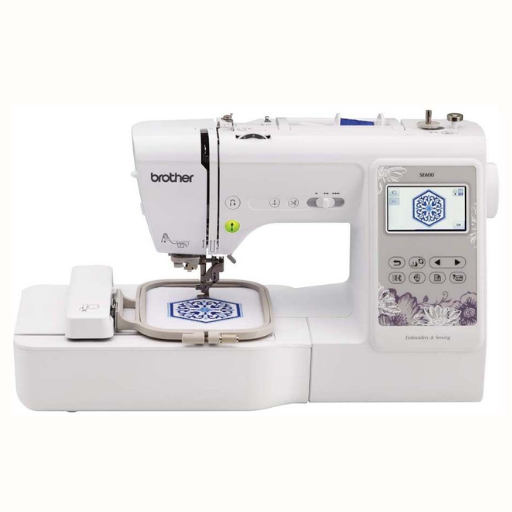
When considering the affordability aspect in some of the best embroidery machines, Brother PE535 and Janome Memory Craft 200E seem to come up. These machines assist in primary Empress on built-in designs with simple interfaces for self-reliance on the users at an affordable rate, so they are appropriate for people on a budget or even some novices. However, regarding the high-end models, Brother Luminaire Innov-ís XP2 and Bernina 790 Plus are exemplary. They are intended for professionals or passionate amateurs as they are packed with technology and offer multiple design options, fast sewing, and accuracy. They are looking for the best quality and flexibility in the price. Both the budget and high-end range of machines have some specific advantages, enabling the consumers to select a machine depending on their required creative inputs and their budget.
Identifying the Best Budget Embroidery Machine
As I searched for the ideal budget embroidery machine, I read a wide range of reviews from different people. The Brother PE535 seems to always be among the top picks, especially for first-timers, because it is easy to use, affordable and has a reasonable amount of embroidery designs. The Janome Memory Craft 200E is an equally strong option as it is easy to operate and does the job. Though the PE535 cost slightly less, I would argue that the Janome is worth it as it has a wider set of features and is more robust. Lastly, Singer Quantum Stylist EM200 is more suited for intermediate users because of its bigger embroidery area and many design options. It is also not too expensive. After all, these three models are the most advised options if you are a beginner in the vast world of embroidering.
Exploring High-End Embroidery Machine Options
Many online resources list Brother Luminaire Innov-ís XP2, Bernina 790 Plus, and Janome Continental M17 as some of the best high-end embroidery machines. There is a strong indication of the Brother Luminaire Innov-ís XP2’s superb projection features, which come in handy when attempting to execute even the most intricate designs from its wide library of patterns. As for those that appreciate Swiss engineering, there is the Bernina 790 Plus which would certainly attract them due to its perfect stitch and its unique stitching and embroidery functions. Another renowned machine is the Janome Continental M17 which features a great embroidery area and an easy-to-use touchscreen interface, ideal for people who want a smooth and efficient creative process. On the other hand, all the machines have different and unique features, but their main aim is the same: to give the user the best chance to express themselves artistically in different ways.
Balancing Cost and Features for Beginners
To begin, I should say that my goal was to find an affordable embroidery machine to the beginner buyer while also being functional. I noted that Brother PE535 always pops up time after time as one of the best-rated embroidery machines for cheap because it has features such as a reasonable embroidery area and easy-to-use functioning. Another impressive machine I found was the Janome Memory Craft 200E, but it is slightly more expensive. However, it is strong and easy to use. It has more features and is more effective. Finally, one machine that seems quite ambitious in terms of monetary investment is the Singer Quantum Stylist EM200. It seems quite reasonable for the extra investment, along with it boasts a large area within which embroidery can be done and more design options as well. Taking into account these factors allows me to make a reasonable buying decision without spending more than necessary, but at the same time, getting a machine that, as a beginner, will allow me to nurture creativity.
How to Use a Sewing and Embroidery Machine for Beginners?
The operation of sewing and embroidery vision revolves around the machine’s manual and every detail regarding its functions and features. Thread and set the machine using a simple piece of fabric for your first project. Do simple sewing exercises to familiarize yourself with the controls. Seek out some patterns, keep the focus on the stitches, and maintain the center position. The right tensions make good clean stitches, and thread change patterns along with the needles do the real magic when it comes to the optimum functioning of the machine. Attempt to build confidence so that various built-in patterns come of use, or even better, any pattern devised by you can be fitted. This step will shape a sturdy base for fruitful sewing and embroidery work.
Getting Started with Your First Embroidery Machine
To begin your embroidery journey with your first machine, read the user manual thoroughly to understand your machine’s specific features and capabilities. Identifying the key parts of the machine and their functions will help you avoid common pitfalls as a beginner. Next, ensure that your machine is set up properly by threading it correctly and selecting a suitable fabric to practice on. Focus on understanding the basic stitches and controls before moving on to more complex patterns. Utilize online tutorials and communities for advice and inspiration. Adjusting the tension settings accurately to achieve clean embroidery work and changing needles regularly to ensure smooth operations is vital. As you gain experience, start incorporating built-in patterns or import your own designs to expand your creativity. Balancing practice with patience will let you enjoy and succeed in your embroidery projects.
Tips for Maximizing Your Embroidery Area
A well-designed user manual always comes in handy to new embroidery machine users. The first step to comprehend the pre-embedded features of the machine is to read the manual. Every retailer attempts to assist rookie embroiderers by explaining the basic components of the device. However, there is always room for reading and watching practical online lectures to comprehend everything. You should start your journey in embroidering with basic fabric and faux-threading exercises. Progress to more advanced levels gradually, to practice vocals and breath work first and singing technique second. The basic forms will build a solid foundation for advancing onto harder ones. Practice, follow online tutorials, focus, set a timer. Only a very few things will require you to alter the thread tension. For best results, change the needles regularly. Adapting built-in patterns is the easiest way to jumpstart your projects; however, being more creative yields greater results. Enjoy the journey be patient, focusing on the ends usually leads to rope burn and frustration.
Common Beginner Mistakes and How to Avoid Them
The embroidery industry is not an easy one. To improve one’s craft, it is imperative to learn from one’s mistakes. As for me, the first stumbling block and mistake was related to the fabric. More specifically, I had no idea about the stabilization of the fabric. Now, I make sure to look out for that and keep an eye on the tension while stitching, both of which I neglected and, as a result, had improper stitching in the past. But now I regularly check tension settings and have made it a point to adjust accordingly.
Furthermore, I have seen significant improvements in my work by changing my needle after several projects. Previously, I was not even careful of doing that which is one of the reasons I struggled and why dull needles were damaging my fabric and the quality of the stitches. Then there is the tendency of designers to source through instructions without any sort of plan, which has created headaches for me as it has caused a plethora of errors that haven’t existed after I have changed my ways of working methodically. Since making these changes, I have seen steady improvements with my embroidery work.
What Are the Must-Have Features in an Embroidery Machine for Beginners?
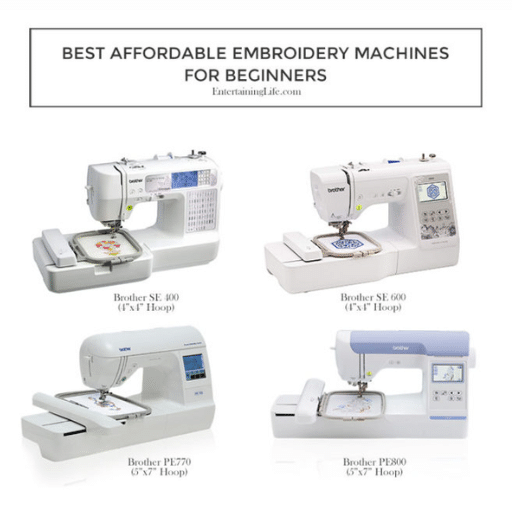
It is important to note that the main criterion when looking for an embroidery machine for beginners, mechanics, and equipment is ease of use. One should choose a device with good navigation and built-in suggestions for picking presser feet. Additionally, automatic threading and cutting mechanisms eliminate the need to change processes, saving time manually. There are also several preset designs or alphabets that are vital for getting the beginners accustomed to the new device without feeling overloaded with learning such a lot in such a short time. An adjustable foot pedal is essential, allowing you to walk before you run. Of course, it is also advantageous to have a big enough embroidery space to allow for sufficient wiggle room, and USB ports to upload designs that can be modified according to the user’s improvement. If these features are emphasized, then one can expect the process to be easier to learn and fun to get through.
The Importance of Built-in Designs and Computerization
Regarding the significance of integrative embroidery patterns and computerization in embroidery machines, it impressed me to note how these features greatly ease the creativity expectation in the processes. Without me being such a fantastic emulator of projects, built-in ones enable me to hit the ground running: they serve like emulators. They serve as a source of inspiration that is readily available. The practical workings can enhance this further through perfection and customized options, which manual ones practically never can. With the introduction of such digital features, I find I can manipulate the stitches and dimensions of a design, as well as bring my own designs into the machine via a USB stick, so my equipment develops as I do. This cluster of features leads to the improvement of the creation of embroidery as well as precision, and in this case, even beginning embroiderers like me can enjoy or relax through the embroidery processes with less strain.
Understanding the Role of Sewing Speed and Features
To know the significance of sewing speed and its features, how they enhance the embroidery experience has to be considered. Speed adjustment becomes unavoidable in light of the various projects I undertake because it allows one to begin sewing slowly and then increase the pace, thus, limiting errors. Automatic needle threading, automatic thread cutters, and alternative stitch selections further reduce cycle time and minimize frustration. Combined, these factors allow for consistent output and the ability to work with various fabrics while crafting more complex designs. This versatility is crucial, considering that I would like to reach certain milestones as I work to improve my skills in line with what some of the best online platforms have to offer.
Choosing a Machine with a User-Friendly Touch Screen
While one could argue that resuming the use of a traditional coercive approach towards apparatuses equipped with a display is valid, I would personally maintain focus on the screens. My opinion is supported by my experience, whereby the best screens come equipped with friendly interfaces that allow design selection or modifying general work settings to be done without much hassle. After reviewing the resources provided to me in class, I understood that these touch screens often have a decent resolution and are easy to use which enables every individual to undertake embroidery tasks effortlessly. Viewing such instructions on the machine is also very effective because it lessens the amount of frustration experienced while learning how to work with such a device. In all, with the implementation of a straightforward and streamlined approach, I was relieved of much strain when working and could hone my skills over time.
References
Frequently Asked Questions (FAQ)
Q: What are the 4 best sewing and embroidery machines for beginners?
A: The 4 best sewing and embroidery machines for beginners typically offer a combination of user-friendly features and versatile capabilities. Popular choices include the Brother SE600, the Singer Quantum Stylist 9960, the Janome Horizon Memory Craft 9850, and the Brother PE800. These models balance sewing and embroidery features, making them ideal for those new to both crafts.
Q: What’s the best sewing machine for beginners looking to explore embroidery as well?
A: The Brother SE600 is often considered the best machine for beginners wanting to explore sewing and embroidery. It offers easy-to-use computerized functions, a range of sewing stitches, and built-in embroidery designs, making it perfect for novice users.
Q: Is there a budget machine suitable for starting an embroidery business?
A: The Brother PE800 is a great budget machine for starting a small embroidery business. It provides a maximum embroidery area of 5” x 7”, offering space for larger designs, and includes 138 built-in embroidery designs, which can be helpful for small business projects.
Q: What should I look for in a high-end sewing and embroidery machine?
A: In a high-end machine, seek features like a large embroidery area, maximum embroidery speed, and the ability to handle multi-needle embroidery. Additionally, consider machines with advanced sewing capabilities and a robust set of built-in embroidery designs.
Q: Can a brother embroidery machine handle large embroidery projects?
A: Yes, Brother embroidery machines, such as the Brother PE800, are equipped to handle large embroidery projects due to their spacious maximum embroidery area and ability to accommodate larger designs.
Q: What sewing features are important for beginners?
A: Important sewing features for beginners include a variety of sewing stitches, an easy-to-use interface, automatic needle threading, and adjustable sewing speeds. These features help simplify the learning process and enhance the sewing experience.
Q: Are there machines combining home sewing and basic embroidery capabilities?
A: Yes, machines like the Brother SE600 and Singer Quantum Stylist 9960 combine home sewing and basic embroidery capabilities. These models offer a range of sewing functions and essential embroidery features, making them versatile for home projects.
Q: How can I choose the best machine for my needs?
A: To choose the best machine for your needs, consider your primary focus (sewing, embroidery, or both), the types of projects you plan to undertake, and your budget. Look for machines with specific desired features, such as embroidery size, sewing function, and built-in designs.
Q: What is the maximum embroidery size I can expect from beginner machines?
A: Beginner machines typically offer a maximum embroidery size ranging from 4” x 4” to 5” x 7”. This size suits most basic embroidery projects and provides ample space for creativity without overwhelming new users.







